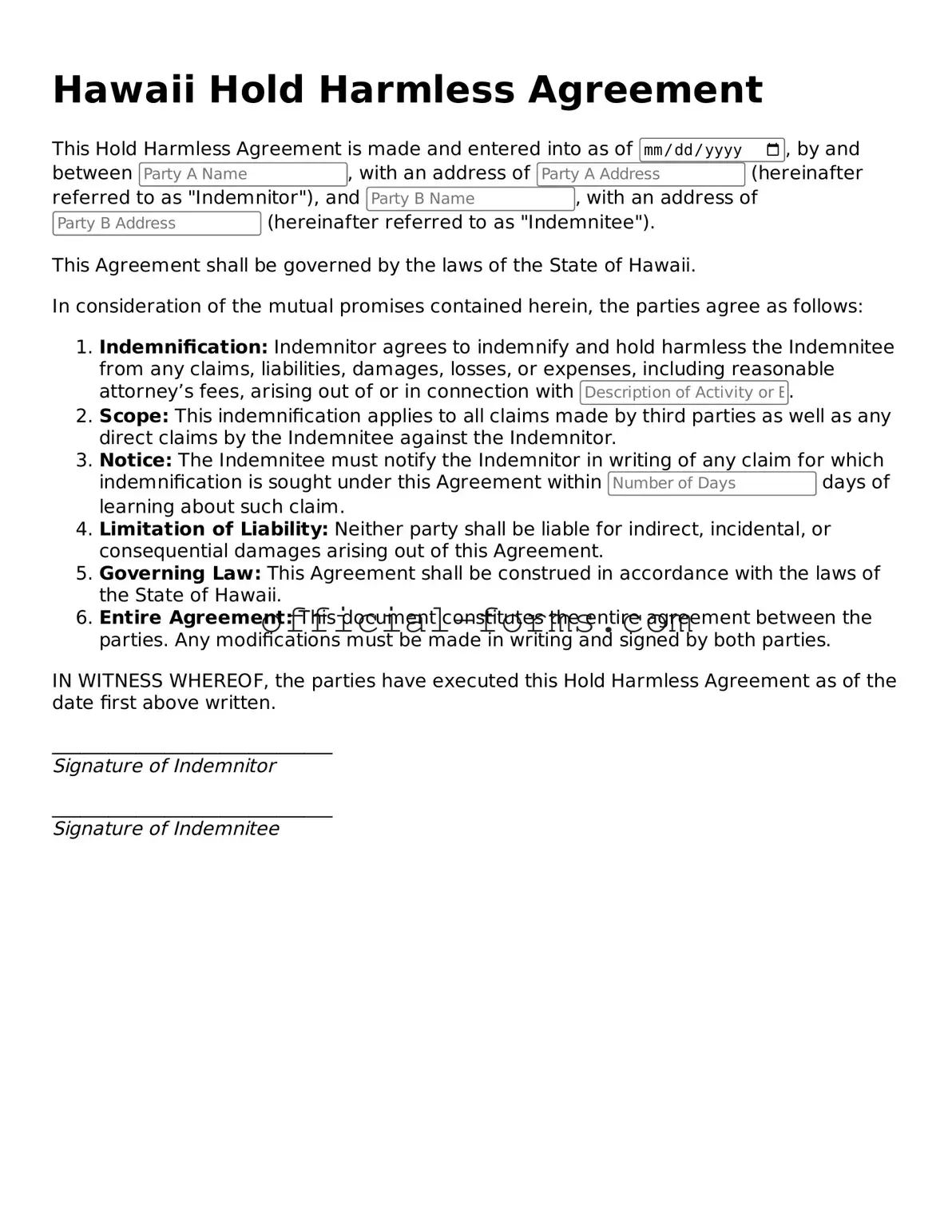When filling out the Hawaii Hold Harmless Agreement form, individuals often overlook important details that can lead to complications later on. One common mistake is failing to read the entire document before signing. It’s essential to understand all terms and conditions outlined in the agreement. Skimming through can result in missing critical information that may affect your rights and responsibilities.
Another frequent error is not providing accurate personal information. This includes names, addresses, and contact details. Incorrect information can create confusion and complicate the enforcement of the agreement. Always double-check that the information provided is correct and up-to-date.
People often neglect to specify the scope of the agreement. The Hold Harmless Agreement should clearly outline what activities or situations are covered. Without this clarity, there may be misunderstandings about the extent of liability being waived. Clearly defining the terms helps prevent disputes in the future.
Omitting signatures is a mistake that can render the agreement invalid. Both parties involved must sign the document for it to be legally binding. Ensure that all necessary signatures are collected before considering the form complete.
Another common oversight is failing to date the agreement. A date is crucial as it establishes when the agreement takes effect. Without a date, there may be ambiguity regarding the timeline of the agreement, which could lead to challenges in enforcement.
People sometimes forget to include any necessary witnesses or notary requirements. Depending on the specific situation, having a witness or notarizing the document may be necessary for it to hold up legally. Ignoring these requirements can weaken the agreement’s validity.
Inadequate understanding of liability waivers is also a frequent issue. Individuals may not realize the extent to which they are waiving their rights. It’s important to comprehend what liabilities are being assumed and the implications of signing the agreement.
Failing to keep a copy of the signed agreement is another mistake that can lead to problems. Always retain a copy for personal records. This ensures that you have access to the terms agreed upon should any issues arise later.
Lastly, many individuals do not consult with a legal professional before signing. While the form may seem straightforward, legal advice can provide insights into potential risks and obligations. Consulting with an expert can help clarify any uncertainties and ensure that the agreement meets all necessary legal standards.
